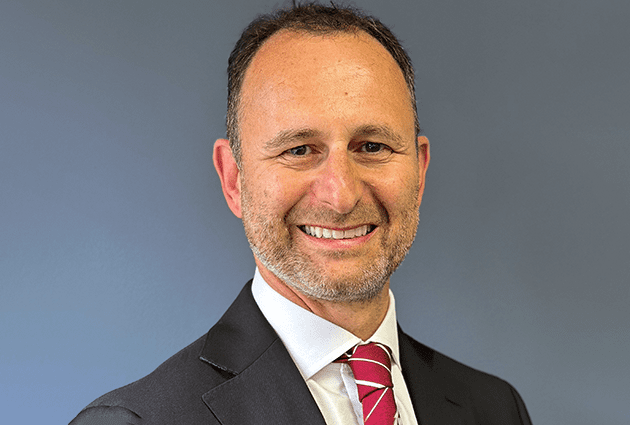Protect your legacy
inheritance tax is complex – and expensive.
Your estate could be liable to pay inheritance tax at 40% on all your worldwide assets, except for the first £325,000 (£650,000 if you are married or in a civil partnership) with an extra £175,000 (rate for 2021/2022) “residence” nil rate band in certain circumstances.
“We strive to provide best in class service to ensure our clients comply with all necessary tax legislation whilst helping to deliver bespoke solutions to improve their overall tax-efficiency”
The actual amount of inheritance tax your estate will have to pay depends on many factors, such as:
- your domicile – the country HMRC deems to be your home for inheritance tax purposes (which is not necessarily the same as your domicile for income tax purposes)
- your marital history
- the location of your assets in the UK and around the world
- the composition of your estate – property, cash, stocks, shares, art, antiques etc.
For example, if you have assets abroad, they will be liable to UK inheritance tax if you are domiciled here but not if your domicile is another country.
Or – to give just one other example – if you have been widowed, you may be eligible to transfer your spouse’s nil rate band, even if you lost your spouse as long ago as WWII.
Scope of the tax
When a person dies IHT becomes due on their estate. IHT can also fall due on some lifetime gifts but most are ignored providing the donor survives for seven years after the gift.
The rate of tax on death is 40% and 20% on lifetime transfers where chargeable. For 2021/22 the first £325,000 chargeable to IHT is at 0% and this is known as the nil rate band. The nil rate band has been frozen at £325,000 since 2009 and this will now continue up to 5 April 2026.
Residence nil rate band
An additional nil rate band is introduced for deaths on or after 6 April 2017 where an interest in a qualifying residence passes to direct descendants. The amount of relief has been phased in over four years and is set at £175,000 for 2021/22. For many married couples and registered civil partnerships (hereafter referred to as spouses in this factsheet) the relief is effectively doubled as each individual has a main nil rate band and each will also potentially benefit from the residence nil rate band.
The residence nil rate band can only be used in respect of one residential property which does not have to be the main family home but must at some point have been a residence of the deceased. Restrictions apply where estates (before reliefs) are in excess of £2 million.
Where a person died before 6 April 2017, their estate will not qualify for the relief. A surviving spouse may be entitled to an increase in the residence nil rate band if the spouse who died earlier has not used, or was not entitled to use, their full residence nil rate band. The calculations involved are potentially complex but the increase will often result in a doubling of the residence nil rate band for the surviving spouse.
Downsizing
The residence nil rate band may also be available when a person downsizes or ceases to own a home on or after 8 July 2015 where assets of an equivalent value, up to the value of the residence nil rate band, are passed on death to direct descendants.
Charitable giving
A reduced rate of IHT applies where 10% or more of a deceased’s net estate (after deducting IHT exemptions, reliefs and the nil rate band) is left to charity. In those cases the 40% rate will be reduced to 36%.
IHT on lifetime gifts
Lifetime gifts fall into one of three categories:
- a transfer to a company or a trust (except a disabled trust) is immediately chargeable
- exempt gifts which will be ignored both when they are made and also on the subsequent death of the donor, eg gifts to charity
- any other transfers will be potentially exempt transfers (PETs) and IHT is only due if the donor dies within seven years of making the gift. An alternative way of looking at this is that they are potentially chargeable until seven years has passed. The primary example of a PET is a gift to another individual.
IHT on death
The main IHT charge is likely to arise on death. IHT is charged on the value of the estate treated as beneficially owned by the deceased. This may include certain types of interest in trust property. Furthermore:
- PETs made within seven years become chargeable
- there may be an additional liability because of chargeable transfers (usually lifetime gifts to trusts) made within the previous seven years.
Estate planning
Much estate planning involves making lifetime transfers to utilise exemptions and reliefs or to benefit from a lower rate of tax on lifetime transfers.
However, careful consideration needs to be given to other factors. For example a gift that saves IHT may unnecessarily create a capital gains tax (CGT) liability. Furthermore the prospect of saving IHT should not be allowed to jeopardise the financial security of those involved.
Gifts to individuals during their lifetime
As these gifts are PETs rather than chargeable transfers when made, no tax at all is due if the donor survives for seven years. Even where a death occurs within seven years IHT may be saved as a result of the lifetime gifts because the charge is based on the value at the date of the gift and does not include any growth on value to date of death.
Nil rate band and seven year cumulation
Chargeable transfers (such as lifetime gifts to trusts) covered by the nil rate band can be made without incurring any IHT liability. Once seven years have elapsed between chargeable transfers an earlier transfer is no longer taken into account in determining IHT on subsequent transfers. Therefore every seven years a full nil rate band will be available to make lifetime chargeable transfers.
Transferable nil rate band
It is possible for spouses and civil partners to transfer the nil rate band unused on the first death to the surviving spouse for use on the death of the surviving spouse/partner. On that second death, their estate will be able to use their own nil rate band and in addition the same proportion of a second nil rate band that corresponds to the proportion unused on the first death. This allows the possibility of doubling the nil rate band available on the second death. This arrangement can apply where the second death happens after 9 October 2007 irrespective of the date of the first death.
Annual exemption
An amount of £3,000 per annum may be given by an individual without an IHT charge. Any unused annual exemption may be carried forward, one year only, for use in the tax year that immediately follows.
Gifts between spouses
Gifts between spouses are generally exempt, if both are either UK or non UK domiciled. It may be desirable to use the spouse exemption to transfer assets to ensure that both spouses can make full use of lifetime exemptions, the nil rate band and PETs. Special rules apply where only one spouse has a UK domicile.
Small gifts
Gifts to individuals not exceeding £250 in total per tax year per recipient are exempt. The exemption cannot be used to cover part of a larger gift.
Normal expenditure out of income
Gifts which are made out of income which are typical and habitual and do not result in a fall in the standard of living of the donor are exempt. Payments under deed of covenant and the payment of annual premiums on life insurance policies would usually fall within this exemption.
Family maintenance
A gift for family maintenance does not give rise to an IHT charge. This would include the transfer of property made on divorce under a court order, gifts for the education of children or maintenance of a dependent relative.
Wedding presents
Gifts in consideration of marriage are exempt up to £5,000 if made by a parent with lower limits for other donors.
Gifts to charities
Gifts to registered charities are exempt provided that the gift becomes the property of the charity or is held for charitable purposes.
Business property relief (BPR)
When ‘business property’ is transferred there is a percentage reduction in the value of the transfer. Often this provides full relief. In cases where full relief is available there is little incentive, from a tax point of view, to transfer such assets in lifetime. Additionally no CGT will be payable where the asset is included in the estate on death. Professional advice should be sought to determine whether you have qualifying business property.
Agricultural property relief (APR)
APR is similar to BPR in that it reduces the value of the transfer but it may not give full relief on the value. It is available on the transfer of agricultural property so long as various conditions are met.
Use of trusts
Trusts can provide an effective means of transferring assets out of an estate whilst still allowing flexibility in the ultimate destination and/or permitting the donor to retain some control over the assets. Provided that the donor does not obtain any benefit or enjoyment from the trust, the property is removed from the estate.
We can advise you on whether a trust is suitable for your circumstances and the types of trust arrangements available.
Life assurance
Life assurance arrangements can be used as a means of removing value from an estate and also as a method of funding IHT liabilities.
A policy can also be arranged to cover IHT due on death. It is particularly useful in providing funds to meet an IHT liability where the assets are not easily realised, eg family company shares.
Complexity – is your Will up to date?
Individuals now have three nil rate bands to consider. The standard nil rate band has been available for many years. In 2007 the ability to utilise the unused nil rate band of a deceased spouse was introduced which may enable surviving spouses to have a nil rate band of up to £650,000.
From 6 April 2020 some surviving spouses also have up to an additional £350,000 in respect of the residence nil rate band to arrive at a total nil rate band of £1 million. However this will only be achieved by careful planning and, in some cases, it may be better for the first deceased spouse to gift some assets to the next generation and use up some or all of the available nil rate bands.
For many individuals, the residence nil rate band will be important but individuals will need to revisit their wills to ensure that the relief will be available and efficiently utilised.
Other tax services
360° Advisory
When we work together, you achieve more.
Get all the expertise you need – all in one place. Instead of spending your time piecing together siloed advice from a range of advisors, you can put our end-to-end solutions into action and start getting results. Are you ready to reveal new opportunities together? Let’s talk.












TALK TO OUR EXPERTS


















TALK TO OUR EXPERTS






360° Advisory
When we work together, you achieve more.
Get all the expertise you need – all in one place. Instead of spending your time piecing together siloed advice from a range of advisors, you can put our end-to-end solutions into action and start getting results. Are you ready to reveal new opportunities together? Let’s talk.
360° Advisory
When we work together, you achieve more.
Get all the expertise you need – all in one place. Instead of spending your time piecing together siloed advice from a range of advisors, you can put our end-to-end solutions into action and start getting results. Are you ready to reveal new opportunities together? Let’s talk.







